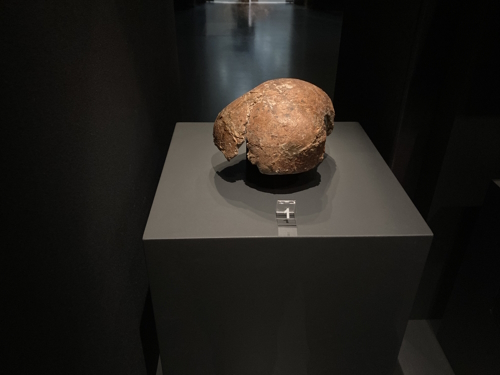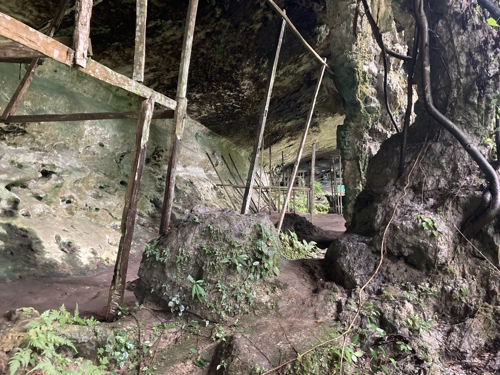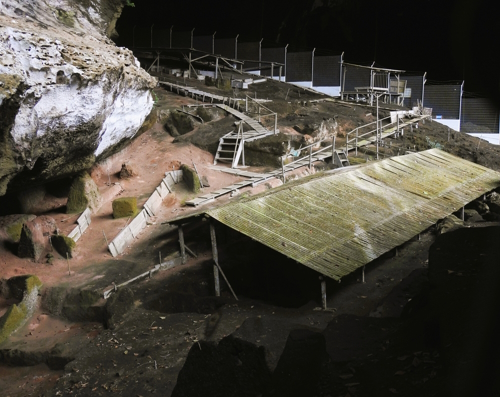Blog TWHS Visits
Niah Caves
A visit to ‘The Archaeological Heritage of Niah National Park’s Caves’ nowadays has to start in Kuching, where in the wonderful Borneo Cultures Museum they have ‘Deep Skull’ on display. The museum’s fourth floor holds an intriguing exposition about the findings in Niah.
When I arrived at Niah National Park itself, I was surprised to see banners all around stating ‘Niah National Park Toward UNESCO World Heritage Site’. As the nomination is only up in 2024, this is a bit premature and just shy of failing Commandment #7! The facilities, including a large car park, cafeteria, and tourist bungalows, already are set up for high numbers of visitors. On a weekday in March 2023 though, there were only a handful of other people.
There still is no bridge however to enter the park, so two young guys were ferrying the visitors across (1 ringgit, 1 minute). On the other side, the 3km long trail to the caves starts. I had read reports beforehand about how slippery the walkway is, even dangerous. To make things worse, it had rained heavily all night and was just starting to clear up when I arrived at Niah. So I took it slowly and used the handrails wherever I could. It was indeed slippery in places, but I think the park already has taken some measures to improve such as placing additional red-and-white coloured iron bars on the steepest parts.
After about 50 minutes I arrived at the stairs to the caves in one piece. There’s a stall there where you can buy cold drinks and snacks. Just a short climb leads to the first cave, the Traders Cave. Having just been to Gunung Mulu with its huge cave chambers, it was a surprise to these half-open cave shelters. They are also dry inside (no dripstone!), except for the thick layers of guano. What immediately stands out are the bamboo constructions, left behind by the birds' nest collectors.
The Great Cave lies just 300m further on and is easy to reach (still no flashlight needed). It has a ‘Great’ amphitheater-like setting indeed, with several points of interest. There is the fenced-off area where the archaeological digs are taking place. There are bamboo poles hanging from the roof used for bird nest collecting. There’s even a little shrine. I climbed the stairs all the way to the top to enjoy the full overview of this cave. After this, I decided not to push on for the Painted Cave as it would involve more slippery endeavors.
Niah’s natural setting is no match for Gunung Mulu. The canopy here is less high and the forest is not so dense. It also does not have similar biodiversity. So I am on the same page as Solivagant suggesting they should nominate for cultural criteria only.
On the way out, right at the jetty, I visited the site’s museum. With the most prized pieces in Kuching, this is just a small exhibition. Still, they do a good job of explaining the various aspects this site is about, from the geology to showing actual bird nests that can be eaten (in both prepared and unprepared state).
Getting there & away on public transport is well-described in the ‘Getting there by bus’ paragraph on the park’s official website (scroll down). It did take a bit of asking around to find a driver to take me from the junction to the park (there aren’t many tourists at the moment so there’s no point for them in waiting around). The cost is 40 ringgit. On the way back, the lady at the ticket office called a driver for me. Door-to-door it took 2.5 hours from Miri. Combined with a park visit of 3-4 hours, count on a full-day excursion.
Els - 19 March 2023


